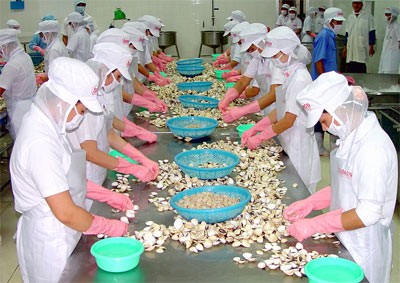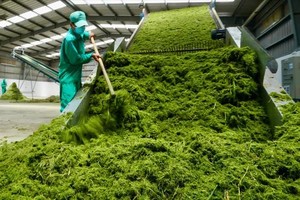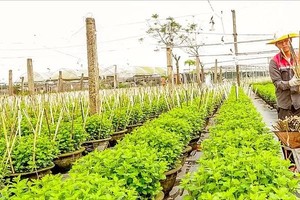A type of clam called ngheu (Meretrix lyrata) have been dying in huge numbers in the Mekong Delta province of Tien Giang’s Go Cong Dong District, threatening the livelihoods of numerous local farmers.

Around 900 hectares of ngheu harvesting area in the district’s Tan Thanh Commune have seen clams die recently of unknown causes, though some speculate that the scorching weather is to blame.
With an average yield of 15-20 tons of ngheu per hectare and market prices of VND17,000-18,000 per kilogram, farmers have now incurred a total estimated loss of over VND230 billion (US$12.1 million).
The coastal area once flourished with ngheu, which were harvested and sold in huge numbers, but clam farmers today are struggling just to get by.
Pham Van Kiep, vice chairman of the Tan Thanh Commune People’s Committee, said, “It’s over! All farms in Cay Bang, Cau Muong and Tan Phu hamlets are [devastated] because of the dead ngheu.”
Farms were doing well until the first week of March when people began noticing the clams were dying in small numbers, he said.
At that time, no one was overly concerned and thought it was normal to see a few of them die. But unexpectedly, the ngheu began to perish rapidly in larger numbers through mid-March and now most are dead, said Mr. Kiep.
Local authorities and farmers have been working to control the situation, but efforts have so far been futile.
Farmer Nguyen Phi Quan said, “I used all my money and borrowed some to invest over VND400 million ($21,000) in a 3-hectare ngheu farm. Merchants offered to buy my ngheu at VND18,000 per kilogram early this month. I had prepared to sell it but then the epidemic hit, destroying my entire farm. Now, I don’t know where to get money to pay the debt.”
The clams have been dying at all local farms, even ones operated by experienced farmers.
Vo Van Manh, considered one of the best farmers in the region with 17 years experience breeding ngheu, stands to lose over VND2 billion ($105,260) as all of the clams on his 17-hectare farm have now died.
He said in previous years, ngheu usually died during the period before and after Tet, but the numbers were very low. This year, however, they expired very rapidly causing the worst ngheu loss in the past decade.
Widespread risk
According to preliminary statistics from the Tan Thanh Commune People’s Committee, around 40-100 percent of 900 hectares of ngheu farms that harvest the clams for meat, and 20-40 percent of 300 hectares of breeding area in the commune have seen losses.
Huynh Thi To, vice chairwoman of the Go Cong Dong District People’s Committee, said that so far, district authorities have yet to find solutions to stop the widespread deaths of ngheu and assist farmers.
Local agencies are continuing to search for the cause of the deaths, while Chairwoman To said a possible cause could be the recent hot weather and high salinity.
Farmer Manh said the same situation was also seen at ngheu farms in Can Gio District in Ho Chi Minh City before Tet, and now farms in Go Cong Dong have followed suit. There looks to be no end in sight to the epidemic, he said.
Ngheu farms in Ben Tre and Tra Vinh provinces will be in the same boat if the problem is not rectified soon, Mr. Manh added.
Le Van Quang, deputy head of Rang Dong Ngheu Cooperative in Ben Tre Province’s Binh Dai District, said ngheu have also begun to die here, causing great anxiety for farmers.
For the time being, the cooperative has hurried to harvest large farms and moved 200 tons of breeding ngheu to another area to avoid the epidemic, he added.
Improved farming methods needed
Nguyen Van Dao, director of Go Dang Seafood Company – one of the country’s leading ngheu exporters – told Sai Gon Giai Phong that ngheu is the most popular seafood in many countries. The export market has continued to expand and export prices have also risen.
Export contracts could also be in jeopardy now that the clams are dying off. Therefore, not only farmers but local exporters too are concerned, Mr. Dao added.
He said that in addition to finding urgent solutions to the current situation, long-term measures need to be taken relating to the planning, farming, harvesting, processing and export of ngheu.
Clams have excellent export potential, but so far, no research has been carried out on clam farming in relation to the environment and disease, Mr. Dao added.
























